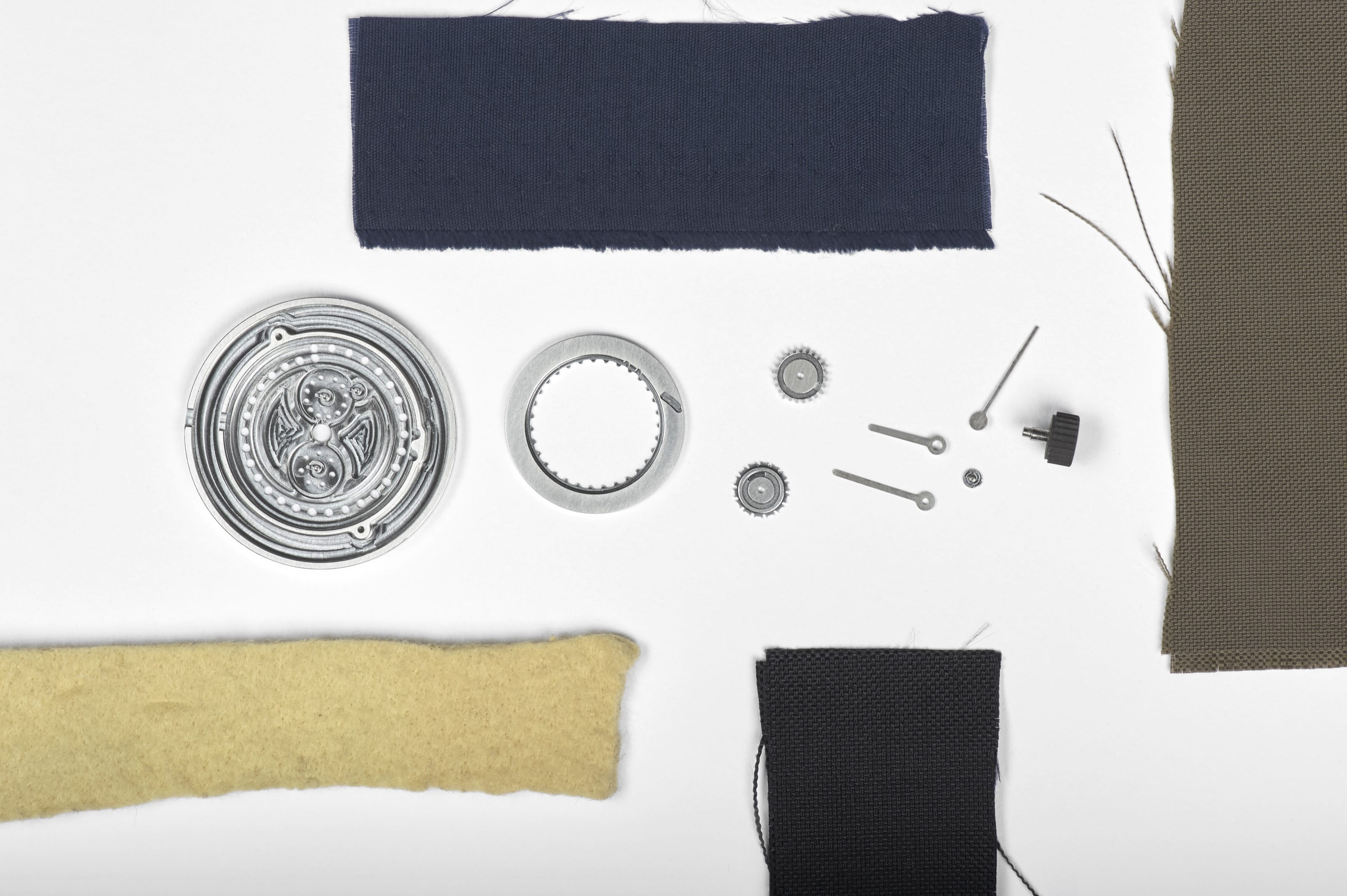Aluminum
| Beat Weinmann
A valuable watch has to have a certain weight! We can understand the thoughts behind this general formula. A beautiful classical watch has a certain weight which reflects haptically the skills and effort that went into making it.
Our annual calendar in sterling silver 925, as well as versions we have made for certain clients with solid gold dials, provide that experience when they are worn.
An ochs und junior annual calendar in a 42mm titanium case weighs exactly 70 grams including the strap. It is thus relatively light, yet very robust, and strikes perhaps the perfect balance between providing the haptic experience of a mechanical watch and the comfort associated with less weight.
But what if we manufactured the dial and all of the functional components as lightly as absolutely possible for a change? That’s what we asked ourselves.
Entirely out of aluminum!
This ultra-light material, which is used in planes, race cars, lightweight sports equipment and other applications where weight is a key factor, offers the stability necessary to withstand the forces at work in an annual calendar. Furthermore, it lends itself to being precisely machined.
Peter Cantieni has made five complete sets from the aluminum alloy AlMgSi1.
For the functional dial, he went all out, milling away all material that wasn’t absolutely needed on the rear-side of the dial. The whole dial now weighs a mere 2.35 grams (as compared to13.7 grams for the brass dial).
Here’s a list of the weights of the individual components – all made from aluminum:
- dial: 2.35 g
- date disk: 0.43 g
- month disk: 0.05 g
- weekday disk: 0.07 g
- minute hand: 0.01 g
- hour hand: 0.01 g
- second hand: less than .01g
And because we think this is a very interesting avenue to pursue, Sabina Brägger is working on a prototype strap which should be comfortable to wear while weighing as little as possible. On the picture above you’ll see the Kevlar core next to textiles normally used for high-tech working clothes.
Are you curious to see what will come out of this and in what we encase these parts? We’ll report soon on the progress of this project!